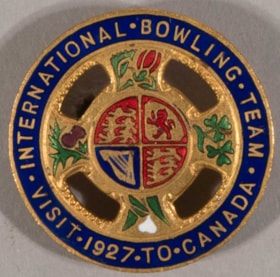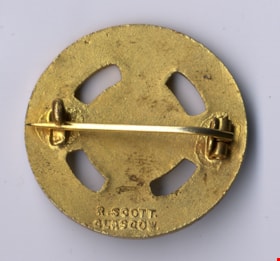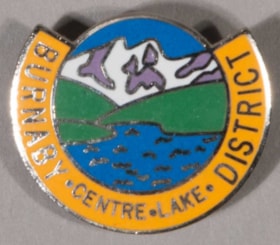Narrow Results By
Subject
- Academic Disciplines 3
- Accidents 14
- Accidents - Automobile Accidents 31
- Accidents - Train Accidents 23
- Adminstrative Groups - Committees 4
- Adornment 83
- Adornment - Jewelry 11
- Adornment - Lapel Pins 84
- Advertising Medium
- Advertising Medium - Business Cards 17
- Advertising Medium - Flyer 38
- Advertising Medium - Poster 18
handbill; advertisement
https://search.heritageburnaby.ca/link/museumartifact36978
- Repository
- Burnaby Village Museum
- Accession Code
- BV988.44.204
- Description
- Don't Miss This! - Flyer. An Advertising flyer for the Capital Entertainers at the Elks' Auditorium for Tuesday and Wednesday, September 25-26. There is no year given. The flyer states that the performance is "Two Hours of Clean High-Class Entertaining". Admission was 75 cents for Adults and 25 cents for Children. At the bottom of the page is "Kamloops Sentinel Limited". The flyer measures 15cm x 21.5cm.
- Colour
- Beige
Images
Harding and Yasue Yasui
https://search.heritageburnaby.ca/link/museumdescription15218
- Repository
- Burnaby Village Museum
- Date
- [1926] (date of original), copied 2004
- Collection/Fonds
- In the Shadow by the Sea collection
- Description Level
- Item
- Physical Description
- 1 photograph (tiff) : 300 dpi
- Scope and Content
- Photograph of Harding and Yasue "Margaret" Yasui seated on the steps of their home on the site of the Nichols Chemical Plant.
- Repository
- Burnaby Village Museum
- Collection/Fonds
- In the Shadow by the Sea collection
- Description Level
- Item
- Physical Description
- 1 photograph (tiff) : 300 dpi
- Scope and Content
- Photograph of Harding and Yasue "Margaret" Yasui seated on the steps of their home on the site of the Nichols Chemical Plant.
- History
- Sukegoro (Shoyen) Yasui (1884-1972) and his wife Tane (Hirata) Yasui (d.1987) emigrated from Japan to Canada in 1919. Sukegoro and Tane had two children Yasue Margaret (Matsumura) (1921-2019) and Harding Yasui (1923-2008). Sukegoro worked as a burner operator for the Nichols Chemical Company of Barnet B.C. The family lived on the site with five other families in a bunkhouse including the three Kokuryo brothers and their families and the Kojima family. The children attended Barnet School for three years before the family moved to Surrey in 1934 after purchasing farm land. Sukegoro and Tane Yasui grew strawberries and raised chickens on the farm and Sukegoro continued to work shift work at the Nichols plant. In 1942, the Yasui family were interned and sent to work on a sugar beet farm near Lethbridge, Alberta. While living in Picture Butte, Alberta,Yasue married Matsuo Matsumura. Following the war, the whole family moved to Kingston, Ontario where Harding completed his senior year of high school. A few years later, Harding moved to Montreal and his parents joined him.
- Geographic Access
- Burrard Inlet
- Accession Code
- BV019.32.38
- Access Restriction
- No restrictions
- Reproduction Restriction
- No known restrictions
- Date
- [1926] (date of original), copied 2004
- Media Type
- Photograph
- Historic Neighbourhood
- Barnet (Historic Neighbourhood)
- Planning Study Area
- Burnaby Mountain Area
- Notes
- Title based on contents of photograph
- Date of photograph [1926] based on birth dates of Yasue "Margaret"- born 1921 and Harding Yasui- born July 1923
- In the Shadow by the Sea spells Sukegoro's wife's name as "Lane" (Harata) Yasui, obits for Sukegoro Yasui and his wife use the spelling "Tane" Hirata Yasui.
Images
Harding and Yasue Yasui in the family car
https://search.heritageburnaby.ca/link/museumdescription15214
- Repository
- Burnaby Village Museum
- Date
- [1926] (date of original), copied 2004
- Collection/Fonds
- In the Shadow by the Sea collection
- Description Level
- Item
- Physical Description
- 1 photograph (tiff) : 300 dpi
- Scope and Content
- Photograph of Harding Yasui and his sister Yasue "Margaret" Yasui (Matsumura) in the family's 1918 Dodge touring sedan. Harding is seated in the driver's seat and Yasue "Margaret" is seated in the back seat.
- Repository
- Burnaby Village Museum
- Collection/Fonds
- In the Shadow by the Sea collection
- Description Level
- Item
- Physical Description
- 1 photograph (tiff) : 300 dpi
- Scope and Content
- Photograph of Harding Yasui and his sister Yasue "Margaret" Yasui (Matsumura) in the family's 1918 Dodge touring sedan. Harding is seated in the driver's seat and Yasue "Margaret" is seated in the back seat.
- History
- Sukegoro (Shoyen) Yasui (1884-1972) and his wife Tane (Hirata) Yasui (d.1987) emigrated from Japan to Canada in 1919. Sukegoro and Tane had two children Yasue Margaret (Matsumura) (1921-2019) and Harding Yasui (1923-2008). Sukegoro worked as a burner operator for the Nichols Chemical Company of Barnet B.C. The family lived on the site with five other families in a bunkhouse including the three Kokuryo brothers and their families and the Kojima family. The children attended Barnet School for three years before the family moved to Surrey in 1934 after purchasing farm land. Sukegoro and Tane Yasui grew strawberries and raised chickens on the farm and Sukegoro continued to work shift work at the Nichols plant. In 1942, the Yasui family were interned and sent to work on a sugar beet farm near Lethbridge, Alberta. While living in Picture Butte, Alberta,Yasue married Matsuo Matsumura. Following the war, the whole family moved to Kingston, Ontario where Harding completed his senior year of high school. A few years later, Harding moved to Montreal and his parents joined him.
- Geographic Access
- Burrard Inlet
- Accession Code
- BV019.32.35
- Access Restriction
- No restrictions
- Reproduction Restriction
- No known restrictions
- Date
- [1926] (date of original), copied 2004
- Media Type
- Photograph
- Historic Neighbourhood
- Barnet (Historic Neighbourhood)
- Planning Study Area
- Burnaby Mountain Area
- Notes
- Title based on contents of photograph
- In the Shadow by the Sea spells Sukegoro's wife's name as "Lane" (Harata) Yasui, obits for Sukegoro Yasui and his wife use the spelling "Tane" Hirata Yasui
Images
Harding and Yasue Yasui in the family car
https://search.heritageburnaby.ca/link/museumdescription15215
- Repository
- Burnaby Village Museum
- Date
- [1926] (date of original), copied 2004
- Collection/Fonds
- In the Shadow by the Sea collection
- Description Level
- Item
- Physical Description
- 1 photograph (tiff) : 300 dpi
- Scope and Content
- Photograph of Harding Yasui and his sister Yasue "Margaret" Yasui (Matsumura) in the family's 1918 Dodge touring sedan. Harding is in the driver's seat and his sister Yasue "Margaret" is beside him.
- Repository
- Burnaby Village Museum
- Collection/Fonds
- In the Shadow by the Sea collection
- Description Level
- Item
- Physical Description
- 1 photograph (tiff) : 300 dpi
- Scope and Content
- Photograph of Harding Yasui and his sister Yasue "Margaret" Yasui (Matsumura) in the family's 1918 Dodge touring sedan. Harding is in the driver's seat and his sister Yasue "Margaret" is beside him.
- History
- Sukegoro (Shoyen) Yasui (1884-1972) and his wife Tane (Hirata) Yasui (d.1987) emigrated from Japan to Canada in 1919. Sukegoro and Tane had two children Yasue Margaret (Matsumura) (1921-2019) and Harding Yasui (1923-2008). Sukegoro worked as a burner operator for the Nichols Chemical Company of Barnet B.C. The family lived on the site with five other families in a bunkhouse including the three Kokuryo brothers and their families and the Kojima family. The children attended Barnet School for three years before the family moved to Surrey in 1934 after purchasing farm land. Sukegoro and Tane Yasui grew strawberries and raised chickens on the farm and Sukegoro continued to work shift work at the Nichols plant. In 1942, the Yasui family were interned and sent to work on a sugar beet farm near Lethbridge, Alberta. While living in Picture Butte, Alberta,Yasue married Matsuo Matsumura. Following the war, the whole family moved to Kingston, Ontario where Harding completed his senior year of high school. A few years later, Harding moved to Montreal and his parents joined him.
- Geographic Access
- Burrard Inlet
- Accession Code
- BV019.32.36
- Access Restriction
- No restrictions
- Reproduction Restriction
- No known restrictions
- Date
- [1926] (date of original), copied 2004
- Media Type
- Photograph
- Historic Neighbourhood
- Barnet (Historic Neighbourhood)
- Planning Study Area
- Burnaby Mountain Area
- Notes
- Title based on contents of photograph
- See page 128 of book "In the Shadow by the Sea - Recollections of Burnaby's Barnet Village". Caption with photograph reads: "Yasue and Harding Yasui in their family's 1918 Dodge car, 1926"
- In the Shadow by the Sea spells Sukegoro's wife's name as "Lane" (Harata) Yasui, obits for Sukegoro Yasui and his wife use the spelling "Tane" Hirata Yasui.
Images
Hideko Shimotakahara
https://search.heritageburnaby.ca/link/archivedescription35156
- Repository
- City of Burnaby Archives
- Date
- [1922] (date of original), copied 1986
- Collection/Fonds
- Burnaby Historical Society fonds
- Description Level
- Item
- Physical Description
- 1 photograph : b&w ; 12.7 x 17.8 cm print
- Scope and Content
- Photograph of Mrs. Hideko Shimotakahara in front of family home at 4055 Keefer Street (later changed to 4055 Frances Street), North Burnaby. Note the honeysuckle arbor in front. Cherry trees were planted along the boulevard in front of the house.
- Repository
- City of Burnaby Archives
- Date
- [1922] (date of original), copied 1986
- Collection/Fonds
- Burnaby Historical Society fonds
- Subseries
- Pioneer Tales subseries
- Physical Description
- 1 photograph : b&w ; 12.7 x 17.8 cm print
- Description Level
- Item
- Record No.
- 204-013
- Access Restriction
- No restrictions
- Reproduction Restriction
- No known restrictions
- Accession Number
- BHS1988-03
- Scope and Content
- Photograph of Mrs. Hideko Shimotakahara in front of family home at 4055 Keefer Street (later changed to 4055 Frances Street), North Burnaby. Note the honeysuckle arbor in front. Cherry trees were planted along the boulevard in front of the house.
- Names
- Shimotakahara, Hideko
- Media Type
- Photograph
- Notes
- Title based on contents of photograph
- Geographic Access
- Frances Street
- Street Address
- 4055 Frances Street
- Historic Neighbourhood
- Vancouver Heights (Historic Neighbourhood)
- Planning Study Area
- Willingdon Heights Area
Images
Hotel Burnaby
https://search.heritageburnaby.ca/link/archivedescription38341
- Repository
- City of Burnaby Archives
- Date
- [1953]
- Collection/Fonds
- Burnaby Historical Society fonds
- Description Level
- Item
- Physical Description
- 1 photograph : b&w postcard ; 8.7 x 13.1 cm
- Scope and Content
- Photographic postcard advertising the Hotel Burnaby at 1385 Kingsway (old street numbering). A caption on the reverse of the postcard reads: Hotel Burnaby / :Located between new Simpsons-Sears and new Woodwards shopping centres / You will remember Hotel Burnaby for the REST of your life."
- Repository
- City of Burnaby Archives
- Date
- [1953]
- Collection/Fonds
- Burnaby Historical Society fonds
- Subseries
- Jim Wolf subseries
- Physical Description
- 1 photograph : b&w postcard ; 8.7 x 13.1 cm
- Description Level
- Item
- Record No.
- 410-001
- Access Restriction
- No restrictions
- Reproduction Restriction
- Reproduce for fair dealing purposes only
- Accession Number
- BHS2000-11
- Scope and Content
- Photographic postcard advertising the Hotel Burnaby at 1385 Kingsway (old street numbering). A caption on the reverse of the postcard reads: Hotel Burnaby / :Located between new Simpsons-Sears and new Woodwards shopping centres / You will remember Hotel Burnaby for the REST of your life."
- Subjects
- Advertising Medium
- Documentary Artifacts - Postcards
- Buildings - Commercial - Hotels and Motels
- Names
- Hotel Burnaby Limited
- Media Type
- Photograph
- Notes
- Title based on contents of photograph
- Geographic Access
- Kingsway
- Historic Neighbourhood
- Edmonds (Historic Neighbourhood)
- Planning Study Area
- Stride Avenue Area
Images
Hotel Burnaby Ltd.
https://search.heritageburnaby.ca/link/archivedescription38656
- Repository
- City of Burnaby Archives
- Date
- [1955]
- Collection/Fonds
- Burnaby Historical Society fonds
- Description Level
- Item
- Physical Description
- 1 photograph : col. postcard ; 9 x 14 cm
- Scope and Content
- Photographic postcard of Burnaby Hotel located at 1385 Kingsway (old street numbering system). Printed at the bottom of the postcard is the following: Hotel Burnaby Ltd. / 1385 Kingsway at 14th Avenue / Burnaby 3, New Westminster, B.C., Telephone LA 1-8891. On the reverse is written: "Hotel Burna…
- Repository
- City of Burnaby Archives
- Date
- [1955]
- Collection/Fonds
- Burnaby Historical Society fonds
- Subseries
- Jim Wolf subseries
- Physical Description
- 1 photograph : col. postcard ; 9 x 14 cm
- Description Level
- Item
- Record No.
- 474-001
- Access Restriction
- No restrictions
- Reproduction Restriction
- Reproduce for fair dealing purposes only
- Accession Number
- BHS2005-6
- Scope and Content
- Photographic postcard of Burnaby Hotel located at 1385 Kingsway (old street numbering system). Printed at the bottom of the postcard is the following: Hotel Burnaby Ltd. / 1385 Kingsway at 14th Avenue / Burnaby 3, New Westminster, B.C., Telephone LA 1-8891. On the reverse is written: "Hotel Burnaby: Located between new Simpson-Sears and new Woodwards shopping centres. You will remember Hotel Burnaby for the rest of your life."
- Subjects
- Buildings - Commercial - Hotels and Motels
- Documentary Artifacts - Postcards
- Advertising Medium
- Names
- Hotel Burnaby Limited
- Media Type
- Photograph
- Photographer
- Grant-Mann Lithographers Limited
- Notes
- Title based on caption of postcard
- Made by Grant-Mann Lithographers Ltd. "Colour Card" Division, Vancouver British Columbia
- Geographic Access
- Kingsway
- Historic Neighbourhood
- Edmonds (Historic Neighbourhood)
- Planning Study Area
- Stride Avenue Area
Images
ink blotter advertisement
https://search.heritageburnaby.ca/link/museumartifact40598
- Repository
- Burnaby Village Museum
- Accession Code
- BV985.5916.1
- Description
- Anaconda Brass Pipe - Advertisement Ink Blotter. Advertisment card for Anaconda Brass Pipe and P.D. Pugh on 16 W. 4 Ave, Vancouver B.C. The front of the card has photograph of a woman and child with a man in a bathroom looking at pipes. There is a caption at the top of the card "Avoid This with Water Pipes of Rustless Brass". The card provides a product description below the caption. The reverse side of the card has blue construction paper which has been used as an ink blotter. The card was printed in Canada and measures 15cm x 8.5cm.
- Subjects
- Advertising Medium
- Advertising Medium - Business Cards
- Written Communication Tools and Equipment
- Written Communication Tools and Equipment - Blotter
- Geographic Access
- Vancouver
Images
instruction wheel
https://search.heritageburnaby.ca/link/museumartifact33912
- Repository
- Burnaby Village Museum
- Accession Code
- BV991.19.1
- Description
- Family First Aid - Instructional Wheel. Two cardboard disks which rotate to reveal various first aid instruction for various ailments from Sun Stroke, Cuts, Burns and Gun Shots. The smaller inside disk is red with "FAMILY FIRST AID" written across the top. The instructional wheel was distributed by McKay Drugs at 4038 Kingsway, New Westminster. Although the wheel states that the pharmacy was in New Westminster, the address is actually in Burnaby. Wm. W. Saxton was the Pharmacist at the time of distribution. The wheel measures 15.5cm across.
- Colour
- Red
- Subjects
- Documentary Artifacts
- Advertising Medium
Images
interurban transfer
https://search.heritageburnaby.ca/link/museumartifact28401
- Repository
- Burnaby Village Museum
- Accession Code
- HV973.29.27
- Description
- B.C. Electric Railway - Transfer . The transfer is on buff paper with black and red print. The transfer is for the B.C. Electric Railway from Interurban Line. Junction point 84975, punched to "VANC'R CITY", a.m., on the Westminster Branch. The ticket is punched '9' in first row of numbers below. The ticket also has space for 'EMERGENCY' and 'CHILD' punches. On the reverse side is an advertisement for the Tram News Stands. There is an illustration of wide-eyed policeman waving and shivering.
- Category
- 08. Communication Artifacts
- Classification
- Exchange Media
- Object Term
- Ticket
- Subjects
- Transportation
- Transportation - Electric Railroads
- Exchange Medium
- Exchange Medium - Tickets
- Advertising Medium
Images
Interview with Jiro Kamiya, 2015
https://search.heritageburnaby.ca/link/museumdescription4476
- Repository
- Burnaby Village Museum
- Date
- [2015]
- Collection/Fonds
- Burnaby Village Museum fonds
- Description Level
- Item
- Physical Description
- 1 sound recording (mp3) (01:11:02 min)
- Scope and Content
- Recording of a interview with Jiro Kamiya about the ofuro he built as an exhibit for display at Burnaby Village Museum, and his work in Canada generally. When he speaks in Japanese, his son Frank Kamiya does the English translation. Frank recalls how his father, a Japanese-trained carpenter, came …
- Repository
- Burnaby Village Museum
- Collection/Fonds
- Burnaby Village Museum fonds
- Series
- Museum Oral Histories series
- Subseries
- Museum research interviews subseries
- Description Level
- Item
- Physical Description
- 1 sound recording (mp3) (01:11:02 min)
- Material Details
- Interviewer: Lisa Codd Interviewees: Jiro Kamiya and his son Frank Kamiya Location of Interview: Nikkei Home, Burnaby Interview Date: [2015] Total Number of Tracks: 1 Total Length of all Tracks: 1:11:02
- Scope and Content
- Recording of a interview with Jiro Kamiya about the ofuro he built as an exhibit for display at Burnaby Village Museum, and his work in Canada generally. When he speaks in Japanese, his son Frank Kamiya does the English translation. Frank recalls how his father, a Japanese-trained carpenter, came to be involved in the project, which was donated to the Museum by the Japanese Canadian Citizens Association. An unidentified woman is also present and contributes to the discussion. 0:00 – 6:38: Frank Kamiya recalls the museum’s ofuro project, describing how his father became involved with it. He talks about the ofuro in Canada, speaking of their importance to Japanese Canadians but noting that they have been superseded by newer products. Frank also mentions that ofuros are now subject to modern building regulations. 6:38 – 20:30: Jiro Kamiya describes the construction of the ofuro. He explains the technique of water-proofing and talks about the different sizes of baths, discussing the differences in Japanese and Canadian styles and in the way water was supplied. 20:30 – 28:27: This portion of the recording pertains to Jiro Kamiya’s background as a carpenter in Shizuoka, Japan, in the family’s business, and how he came to immigrate to Canada. Frank talks about his father’s innovations and skills. He discusses the differences between Japanese and Canadian tools. Lisa Codd asks about the tools Jiro donated to the museum. 28:27 – 36:00: Frank talks about his father’s involvement in the building of the Museum’s ofuro. He notes that he himself drew up the plans and submitted them to City Hall. He asks about the ofuro’s plaque and the building’s condition. Lisa explains how the classification of buildings as replica or heritage determines how conservation choices are made. 36:00 – 45:47: Frank describes the purpose and use of the ofuro and the kind of accessories which should be included in the Museum’s display. The exact meaning of ‘ofuro’ is discussed with Jiro, as is bathing protocol for the larger and smaller kinds. 45:47 – 59:13: Jiro recalls New Year and other traditions and Lisa and Frank remark on the differences between the established infrastructures of Japan and those of rural Canada. Frank describes his father’s work in Canada. Jiro talks of being unable to join the carpenters union, but advancing in his profession through his ability and experience with Japanese techniques. 59:13 – 1:11:02: Jiro talks about the work that he did during internment during World War II and his choice to go to Winnipeg with his family. Frank relates how his father adapted to shipyard work, and Jiro tells anecdotes about his working years.
- History
- Interviewee: Jiro Kamiya (ne Tsuneki) was born on August 29, 1910 in Shizuoka Ken, Japan to parents Torakichi Tsuneki and Sono Ssuneki. In 1936, Jiro married Toneko Kamiya. The Tsuneki family were Master Carpenters for over 500 years and the family business, Torakichi Tsuneki Construction Co was the largest and best known construction company in Shizuoka Ken. Jiro also became a master carpenter working for his father's company. In 1933, Jiro immigrated to Canada and in 1936, he returned to Japan to marry. In 1937 he got work at the Hammond Cedar Mill leading a crew of six men and worked there for about three or four years. In 1942 along with over 21,000 Japanese Canadians, Jiro and his family were forcibly removed from the coastal area of British Columbia. Jiro and his family were relocated to Oak Bluff, Manitoba to work on the beet farms. JIro chose this location of internment so that he could keep his family together. While living in Manitoba, Jiro also found work as a carpenter. In 1948 when he was permitted to return to British Columbia, Jiro and his family relocated to Kamloops. In 1951, he began working as a carpenter for Matsumoto Shipyard in North Vancouver and between 1961 and 1974, he worked for Grimwood Construction. From 1975, he worked for Dawson Hall Construction until his retirement at the age of 68. Following his retirement he built a house for his nephew on Mayne Island and a summer house for himself which he completed in 1988. In 2001, Jiro and his wife, Toneko moved to Nikkei Home. While living at Nikkei Home, Jiro made chopsticks out of hardwood, creating over a thousand pairs up until he was 99 years old. Jiro passed away in 2015. Interviewer: Lisa Codd has worked in the museum sector since 2000 and between 2005 and 2019, she worked as the curator at the Burnaby Village Museum. In 2019, Lisa began her work as the City of Burnaby Heritage Planner.
- Creator
- Burnaby Village Museum
- Subjects
- Persons - Japanese Canadians
- Names
- Kamiya, Jiro
- Kamiya, Frank
- Accession Code
- BV019.13.1
- Access Restriction
- No restrictions
- Reproduction Restriction
- No known restrictions
- Date
- [2015]
- Media Type
- Sound Recording
- Notes
- Audio is only available to listen at the Burnaby Village Museum
Audio Tracks
Interview with Jiro Kamiya, 2015, [2015]
Interview with Jiro Kamiya, 2015, [2015]
https://search.heritageburnaby.ca/media/hpo/_Data/_BVM_Sound_Recordings/Oral_Histories/2019_0013_0001_001.mp3Interview with Toki Miyashita by Rod Fowler February 27, 1990 - Track 1
https://search.heritageburnaby.ca/link/oralhistory516
- Repository
- City of Burnaby Archives
- Date Range
- 1900-1946
- Length
- 00:07:05
- Summary
- This portion of the interview is about Toki Miyashita’s family’s internment during WWII, and her Oikawa grandparent’s immigration to BC and settlement on Lion and Don Islands at the mouth of the Fraser River. She describes how the family was moved to the internment camp “The Orchard” in New Denver,…
- Repository
- City of Burnaby Archives
- Summary
- This portion of the interview is about Toki Miyashita’s family’s internment during WWII, and her Oikawa grandparent’s immigration to BC and settlement on Lion and Don Islands at the mouth of the Fraser River. She describes how the family was moved to the internment camp “The Orchard” in New Denver, but managed to find a place to live outside the camp where her grandmother grew a large garden from seeds brought in the seams of her clothing. She notes that the Lion Islands were named Oikawa-shima by the Japanese settlers.
- Date Range
- 1900-1946
- Length
- 00:07:05
- Interviewer
- Fowler, Rod
- Interview Date
- February 27, 1990
- Scope and Content
- Recording is of an interview with Toki Miyashita, conducted by Rod Fowler. Toki Miyashita was one of eleven participants interviewed as part of the SFU/Burnaby Centennial Committee's oral history series titled, "Voices of Burnaby". The interview is about Toki Miyashita’s family’s internment during WWII, her awakening interest in Japanese culture after the war, her subsequent interest in teaching others about Japanese crafts and arts, and becoming a helpful intermediary between Burnaby and visitors from Japan. The interview explores her interest in the Ainu of Japan and their possible link to the aboriginals of BC, her impressions of the Ainu carver Nuburi Toko, and her involvement in the events surrounding the creation of the sculpture “Playground of the Gods” for Burnaby Mountain. The interview also contains interesting details about the art of Japanese flower-arranging. To view “Narrow By” terms for each track expand this description and see “Notes”.
- Biographical Notes
- Toki Miyashita was born in Richmond B.C., ca. 1935, at the Nelson Brothers “fishery”, a second generation Canadian descended from the Oikawa family who settled on Don and Lion Islands (Oikawa-shima). In 1942 the Japanese Canadians in BC were forcibly moved from the coast and their belongings confiscated. Toki Miyashita, her parents, two brothers, and grandparents were first taken to Hastings Park where her father was separated from the family to work in road camps, and the rest of the family were interned in New Denver. Her resourceful grandmother moved the family to land outside the internment camp, growing a large garden from seeds brought with her. In 1946 the family moved to Kamloops and in 1958, after finishing high school, Toki Miyashita moved to Montreal to be with relatives and a small Japanese community. At this time she became interested in Japanese culture and took a Japanese language course at age 22. She learned about Japanese flower-arranging (Ikebana), paper folding (Origami), silk doll making (from a Russian Jew), and how to wear a kimono. She began demonstrating these arts in schools and to other groups, which she continued doing when she, her husband and two young children moved to Burnaby in 1969. Toki Miyashita has been called an unpaid “ambassador” of Japanese culture to the Lower Mainland. She has acted as liaison between Burnaby and her sister city Kushiro in Japan, which involved her in the creation of the Ainu sculpture “Playground of the Gods” on Burnaby Mountain for Burnaby’s Centennial. Toki Miyashita is a recognized Master in Ikebana Sogetsu, a school of flower-arranging, and has served on the board of the Vancouver Ikebana Association. She also served on Burnaby’s Family Court in the 1980s.
- Total Tracks
- 11
- Total Length
- 01:34:10
- Interviewee Name
- Miyashita, Toki
- Interviewer Bio
- Rod Fowler returned to university as a mature student in the 1980s after working about twenty years in the field of economics and computerization in business in England, Europe and Western Canada. He graduated with a BA from SFU in both History and Sociology in 1987, his MA degree in Geography in 1989, and his PhD in Cultural Geography at SFU. He taught courses in Geography, Sociology, History and Canadian Studies at several Lower Mainland colleges, before becoming a full time member of the Geography Department at Kwantlen University College.
- Collection/Fonds
- SFU/Burnaby Centennial Committee fonds
- Transcript Available
- Transcript available
- Media Type
- Sound Recording
- Web Notes
- Interviews were digitized in 2015 allowing them to be accessible on Heritage Burnaby. The digitization project was initiated by the Community Heritage Commission with support from City of Burnaby Council.
Audio Tracks
Track one of interview with Toki Miyashita
Track one of interview with Toki Miyashita
https://search.heritageburnaby.ca/media/hpo/_Data/_Archives_Oral_Histories/_Unrestricted/MSS187-017/MSS187-017_Track_1.mp3Interview with Toki Miyashita by Rod Fowler February 27, 1990 - Track 2
https://search.heritageburnaby.ca/link/oralhistory517
- Repository
- City of Burnaby Archives
- Date Range
- 1942-1969
- Length
- 00:07:41
- Summary
- This portion of the interview is about Toki Miyashita’s growing interest in Japanese culture and arts, studying the Japanese language after she was 22 in Montreal. She talks about how she learned paper-folding (origami), to make silk dolls, flower-arranging (Ikebana), and how to wear a kimono, and …
- Repository
- City of Burnaby Archives
- Summary
- This portion of the interview is about Toki Miyashita’s growing interest in Japanese culture and arts, studying the Japanese language after she was 22 in Montreal. She talks about how she learned paper-folding (origami), to make silk dolls, flower-arranging (Ikebana), and how to wear a kimono, and then began to teach others these skills in Montreal .
- Date Range
- 1942-1969
- Length
- 00:07:41
- Subjects
- Education
- Arts
- Persons - Japanese Canadians
- Interviewer
- Fowler, Rod
- Interview Date
- February 27, 1990
- Scope and Content
- Recording is of an interview with Toki Miyashita, conducted by Rod Fowler. Toki Miyashita was one of eleven participants interviewed as part of the SFU/Burnaby Centennial Committee's oral history series titled, "Voices of Burnaby". The interview is about Toki Miyashita’s family’s internment during WWII, her awakening interest in Japanese culture after the war, her subsequent interest in teaching others about Japanese crafts and arts, and becoming a helpful intermediary between Burnaby and visitors from Japan. The interview explores her interest in the Ainu of Japan and their possible link to the aboriginals of BC, her impressions of the Ainu carver Nuburi Toko, and her involvement in the events surrounding the creation of the sculpture “Playground of the Gods” for Burnaby Mountain. The interview also contains interesting details about the art of Japanese flower-arranging. To view “Narrow By” terms for each track expand this description and see “Notes”.
- Biographical Notes
- Toki Miyashita was born in Richmond B.C., ca. 1935, at the Nelson Brothers “fishery”, a second generation Canadian descended from the Oikawa family who settled on Don and Lion Islands (Oikawa-shima). In 1942 the Japanese Canadians in BC were forcibly moved from the coast and their belongings confiscated. Toki Miyashita, her parents, two brothers, and grandparents were first taken to Hastings Park where her father was separated from the family to work in road camps, and the rest of the family were interned in New Denver. Her resourceful grandmother moved the family to land outside the internment camp, growing a large garden from seeds brought with her. In 1946 the family moved to Kamloops and in 1958, after finishing high school, Toki Miyashita moved to Montreal to be with relatives and a small Japanese community. At this time she became interested in Japanese culture and took a Japanese language course at age 22. She learned about Japanese flower-arranging (Ikebana), paper folding (Origami), silk doll making (from a Russian Jew), and how to wear a kimono. She began demonstrating these arts in schools and to other groups, which she continued doing when she, her husband and two young children moved to Burnaby in 1969. Toki Miyashita has been called an unpaid “ambassador” of Japanese culture to the Lower Mainland. She has acted as liaison between Burnaby and her sister city Kushiro in Japan, which involved her in the creation of the Ainu sculpture “Playground of the Gods” on Burnaby Mountain for Burnaby’s Centennial. Toki Miyashita is a recognized Master in Ikebana Sogetsu, a school of flower-arranging, and has served on the board of the Vancouver Ikebana Association. She also served on Burnaby’s Family Court in the 1980s.
- Total Tracks
- 11
- Total Length
- 01:34:10
- Interviewee Name
- Miyashita, Toki
- Interviewer Bio
- Rod Fowler returned to university as a mature student in the 1980s after working about twenty years in the field of economics and computerization in business in England, Europe and Western Canada. He graduated with a BA from SFU in both History and Sociology in 1987, his MA degree in Geography in 1989, and his PhD in Cultural Geography at SFU. He taught courses in Geography, Sociology, History and Canadian Studies at several Lower Mainland colleges, before becoming a full time member of the Geography Department at Kwantlen University College.
- Collection/Fonds
- SFU/Burnaby Centennial Committee fonds
- Transcript Available
- Transcript available
- Media Type
- Sound Recording
- Web Notes
- Interviews were digitized in 2015 allowing them to be accessible on Heritage Burnaby. The digitization project was initiated by the Community Heritage Commission with support from City of Burnaby Council.
Audio Tracks
Track two of interview with Toki Miyashita
Track two of interview with Toki Miyashita
https://search.heritageburnaby.ca/media/hpo/_Data/_Archives_Oral_Histories/_Unrestricted/MSS187-017/MSS187-017_Track_2.mp3Interview with Toki Miyashita by Rod Fowler February 27, 1990 - Track 7
https://search.heritageburnaby.ca/link/oralhistory522
- Repository
- City of Burnaby Archives
- Date Range
- 1930-1990
- Length
- 00:13:56
- Summary
- This portion of the interview is about Toki Miyashita’s memories of the internment, separation of her father from the family to work on road camps, where she was born in Richmond at the Nelson Brothers “fishery”, confiscation of home in 1942, eventual Redress, and lingering feelings of fear and dis…
- Repository
- City of Burnaby Archives
- Summary
- This portion of the interview is about Toki Miyashita’s memories of the internment, separation of her father from the family to work on road camps, where she was born in Richmond at the Nelson Brothers “fishery”, confiscation of home in 1942, eventual Redress, and lingering feelings of fear and distrust in her family. She also talks about visiting Hiroshima on her trip to Japan in 1980
- Date Range
- 1930-1990
- Length
- 00:13:56
- Interviewer
- Fowler, Rod
- Interview Date
- February 27, 1990
- Scope and Content
- Recording is of an interview with Toki Miyashita, conducted by Rod Fowler. Toki Miyashita was one of eleven participants interviewed as part of the SFU/Burnaby Centennial Committee's oral history series titled, "Voices of Burnaby". The interview is about Toki Miyashita’s family’s internment during WWII, her awakening interest in Japanese culture after the war, her subsequent interest in teaching others about Japanese crafts and arts, and becoming a helpful intermediary between Burnaby and visitors from Japan. The interview explores her interest in the Ainu of Japan and their possible link to the aboriginals of BC, her impressions of the Ainu carver Nuburi Toko, and her involvement in the events surrounding the creation of the sculpture “Playground of the Gods” for Burnaby Mountain. The interview also contains interesting details about the art of Japanese flower-arranging. To view “Narrow By” terms for each track expand this description and see “Notes”.
- Biographical Notes
- Toki Miyashita was born in Richmond B.C., ca. 1935, at the Nelson Brothers “fishery”, a second generation Canadian descended from the Oikawa family who settled on Don and Lion Islands (Oikawa-shima). In 1942 the Japanese Canadians in BC were forcibly moved from the coast and their belongings confiscated. Toki Miyashita, her parents, two brothers, and grandparents were first taken to Hastings Park where her father was separated from the family to work in road camps, and the rest of the family were interned in New Denver. Her resourceful grandmother moved the family to land outside the internment camp, growing a large garden from seeds brought with her. In 1946 the family moved to Kamloops and in 1958, after finishing high school, Toki Miyashita moved to Montreal to be with relatives and a small Japanese community. At this time she became interested in Japanese culture and took a Japanese language course at age 22. She learned about Japanese flower-arranging (Ikebana), paper folding (Origami), silk doll making (from a Russian Jew), and how to wear a kimono. She began demonstrating these arts in schools and to other groups, which she continued doing when she, her husband and two young children moved to Burnaby in 1969. Toki Miyashita has been called an unpaid “ambassador” of Japanese culture to the Lower Mainland. She has acted as liaison between Burnaby and her sister city Kushiro in Japan, which involved her in the creation of the Ainu sculpture “Playground of the Gods” on Burnaby Mountain for Burnaby’s Centennial. Toki Miyashita is a recognized Master in Ikebana Sogetsu, a school of flower-arranging, and has served on the board of the Vancouver Ikebana Association. She also served on Burnaby’s Family Court in the 1980s.
- Total Tracks
- 11
- Total Length
- 01:34:10
- Interviewee Name
- Miyashita, Toki
- Interviewer Bio
- Rod Fowler returned to university as a mature student in the 1980s after working about twenty years in the field of economics and computerization in business in England, Europe and Western Canada. He graduated with a BA from SFU in both History and Sociology in 1987, his MA degree in Geography in 1989, and his PhD in Cultural Geography at SFU. He taught courses in Geography, Sociology, History and Canadian Studies at several Lower Mainland colleges, before becoming a full time member of the Geography Department at Kwantlen University College.
- Collection/Fonds
- SFU/Burnaby Centennial Committee fonds
- Transcript Available
- Transcript available
- Media Type
- Sound Recording
- Web Notes
- Interviews were digitized in 2015 allowing them to be accessible on Heritage Burnaby. The digitization project was initiated by the Community Heritage Commission with support from City of Burnaby Council.
Audio Tracks
Track seven of interview with Toki Miyashita
Track seven of interview with Toki Miyashita
https://search.heritageburnaby.ca/media/hpo/_Data/_Archives_Oral_Histories/_Unrestricted/MSS187-017/MSS187-017_Track_7.mp3invitation
https://search.heritageburnaby.ca/link/museumartifact91070
- Repository
- Burnaby Village Museum
- Accession Code
- BV020.5.1794
- Description
- Invitation; red ink on light orange card stock; text reads top to bottom: "BURNABY VILLAGE MUSEUM / presents / Heritage Walking Tour of Deer Lake / Sunday, September 23rd., 1990 / with / JIM WOLF / $15 (Lunch and Museum Admission Included) / Meet 10:30 A.M. at Museum Adminstration Building"; small illustrations printed on either side of text with silhoettes of people on a beach and standing near a building. Card includes hand written annotations in pencil regarding print settings read: "All / Handset / (NOT STANDING) / 14 pt. PONTIAC / 18 pt. / 12 pt. / 18 pt. BERNHARD / BOOKLET / 14 Pt. / 12 Pt."
- Object History
- Item was found in Burnaby Villagee Museum printshop along with other Heritage Village / Burnaby Villagee Museum ephemera created between 1971 and 1990. Item was printed on printing press in Burnaby Villagee Museum printshop.
- Category
- 08. Communication Artifacts
- Classification
- Documentary Artifacts - - Other Documents
- Object Term
- Request, Invitation
- Measurements
- 7.5 x 12 cm
- Maker
- Burnaby Village Museum
- Country Made
- Canada
- Province Made
- British Columbia
- Site/City Made
- Burnaby
- Publication Date
- 1990
Images
invitation
https://search.heritageburnaby.ca/link/museumartifact91071
- Repository
- Burnaby Village Museum
- Accession Code
- BV020.5.1797
- Description
- Invitation; blue ink on yellow card stock; text reads: "welcome to- / Burnaby Village Museum / "Complimentary Lunch" / Septembeer 18, 1985 / Served from ...11:00 A.M. till 1:00 P.M. / at the / "BOB - INN - CAFE"; decorative rectangular frame in blue ink around text
- Object History
- Item was found in Burnaby Villagee Museum printshop along with other Heritage Village / Burnaby Villagee Museum ephemera created between 1971 and 1990. Item was printed on printing press in Burnaby Villagee Museum printshop.
- Category
- 08. Communication Artifacts
- Classification
- Documentary Artifacts - - Other Documents
- Object Term
- Request, Invitation
- Measurements
- 10 x 12 cm
- Maker
- Burnaby Village Museum
- Country Made
- Canada
- Province Made
- British Columbia
- Site/City Made
- Burnaby
- Publication Date
- 1985
- Names
- Burnaby Village Museum
Images
Japanese Bath House
https://search.heritageburnaby.ca/link/museumdescription464
- Repository
- Burnaby Village Museum
- Date
- [1956] (date of original), copied 1978
- Collection/Fonds
- Burnaby Village Museum Photograph collection
- Description Level
- Item
- Physical Description
- 1 photograph : b&w ; 20.2 x 25.3 cm print
- Scope and Content
- Photograph of a Japanese bath house built outdoors. There are stacks of wood beside the bath house, which is a small wooden structure with a few small windows.There is a plank board walk on the side of the bath house leading to a well. In the centre of the photograph is a man leaning over a stove.…
- Repository
- Burnaby Village Museum
- Collection/Fonds
- Burnaby Village Museum Photograph collection
- Description Level
- Item
- Physical Description
- 1 photograph : b&w ; 20.2 x 25.3 cm print
- Scope and Content
- Photograph of a Japanese bath house built outdoors. There are stacks of wood beside the bath house, which is a small wooden structure with a few small windows.There is a plank board walk on the side of the bath house leading to a well. In the centre of the photograph is a man leaning over a stove. According to a letter sent by the donor, the bath house was built around 1945 - 1946 at Mission Flats, Kamloops, BC by the donor's father, Junzo Yamake (1895-1973). At the time of the letter, the site was part of the Weyerhauser Company's pulp mill complex. The bath house was constructed to complement the house the donor's family was living as there was no indoor bathroom. She writes that it was strange to live in a huge, comfortable English style house, and still have an outhouse, and the outdoor Japanese bath house that were situated around the house. Also, she indicates the man in the centre is her father, Junzo Yamake, boiling water to do spring cleaning.
- Names
- Yamake, Junzo
- Accession Code
- HV978.11.2
- Access Restriction
- No restrictions
- Reproduction Restriction
- May be restricted by third party rights
- Date
- [1956] (date of original), copied 1978
- Media Type
- Photograph
- Related Material
- For another photograph of the same bath house, see HV978.11.1
- Scan Resolution
- 600
- Scan Date
- 2023-08-01
- Photographer
- Kakutani, James Kiyoshi "Jimmie"
- Notes
- Title based on contents of photograph
Images
The Kokuryos, Sukegoro Yasui and Louise Irwin
https://search.heritageburnaby.ca/link/museumdescription15256
- Repository
- Burnaby Village Museum
- Date
- [1980-] (date of original), copied 2004
- Collection/Fonds
- In the Shadow by the Sea collection
- Description Level
- Item
- Physical Description
- 1 photograph (tiff) : 300 dpi
- Scope and Content
- Photograph of (left to right) the Kokuryos, Sukegoro Yasui and Louise Irwin standing on the former site of the Barnet Mill. The north shore of Burrard Inlet is visible in the distance.
- Repository
- Burnaby Village Museum
- Collection/Fonds
- In the Shadow by the Sea collection
- Description Level
- Item
- Physical Description
- 1 photograph (tiff) : 300 dpi
- Scope and Content
- Photograph of (left to right) the Kokuryos, Sukegoro Yasui and Louise Irwin standing on the former site of the Barnet Mill. The north shore of Burrard Inlet is visible in the distance.
- History
- Henry Stanley Irwin (1890-1966) started work at Barnet mill in 1924. Henry and his wife Elsie May Irwin (Taylor) Irwin (1894-1985) first lived with thier two daughters, Eleanor (Nelson) (1924-2005) and Louise (1927-) in a worker's cabin before moving to the Barnet Mill's managers' residence. The household included Elsie's mother, Elizabeth (Shephard) Taylor (1868-1950). The family resided at Barnet until they moved to Vancouver in September 1939. Louise and her older sister Eleanor attended Barnet School like other children in the Barnet area. After the mill closed in 1931, Henry was unemployed for two years, during this time, he hired a horse and driver and cut logs from the slopes of Burnaby Mountain to support his family.
- Subjects
- Persons - Japanese Canadians
- Geographic Access
- Burrard Inlet
- Accession Code
- BV019.32.75
- Access Restriction
- No restrictions
- Reproduction Restriction
- No known restrictions
- Date
- [1980-] (date of original), copied 2004
- Media Type
- Photograph
- Historic Neighbourhood
- Barnet (Historic Neighbourhood)
- Planning Study Area
- Burnaby Mountain Area
- Notes
- Title based on contents of photograph
Images
lapel pin
https://search.heritageburnaby.ca/link/museumartifact6645
- Repository
- Burnaby Village Museum
- Accession Code
- BV985.97.3
- Description
- Pin, round, enamelled brass. Wide blue border around outside with thin gold edges and gold lettering "INTERNATIONAL. BOWLING. TEAM. / VISIT. 1927. TO. CANADA". Inner part of pin is cruciform, with round centre connected to outer edge with four arms, open cut-out areas between. Each arm shows a coloured enamel floral symbol. At top is the rose, at right are shamrocks, at bottom is the lily, at left is the thistle. At the centre of the pin is the Royal Coat of Arms of the United Kingdom in red and blue with gold. Locking pin back on reverse, open loop. "R. SCOTT / GLASGOW" in raised letters near bottom edge. Some discolouration on back, very slight wear on front.
- Category
- 08. Communication Artifacts
- Classification
- Documentary Artifacts - - Memorabilia
- Object Term
- Commemorative
- Marks/Labels
- "INTERNATIONAL BOWLING TEAM", embossed gold lettering in half circle along top of pin "VISIT 1927 TO CANADA", embossed gold lettering in half circle along bottom of pin
- Measurements
- Dia: 2.9 cm
- Country Made
- Scotland
- Site/City Made
- Glasgow
- Subjects
- Adornment
- Adornment - Lapel Pins
- Advertising Medium
- Events - Competitions
- Organizations - Athletic Associations
- Sports - Bowling
Images
lapel pin
https://search.heritageburnaby.ca/link/museumartifact42917
- Repository
- Burnaby Village Museum
- Accession Code
- BV001.21.3
- Description
- Pin, silver-coloured metal, enamelled. Centre is image of landscape, blue water with waves, green hills, purple mountains with white snow and blue sky. Around most of centre, from upper left around bottom to upper right, is wide yellow border with silver "BURNABY . CENTRE . LAKE . DISTRICT". Details of landscape and border edges are silver. Back of pin is silver-coloured, lightly textured, with locking pin back closure. Stamped raised lettering "ALBERT" ? / TROPHIES LTD / VANCOUVER / TAIWAN"
- Category
- 08. Communication Artifacts
- Classification
- Personal Symbols
- Object Term
- Insignia
- Measurements
- L: 2.5 cm x W: 2.1 cm
- Country Made
- Taiwan
- Subjects
- Adornment
- Adornment - Lapel Pins
- Advertising Medium
- Organizations - Boys' Societies and Clubs
- Personal Symbols - Pins
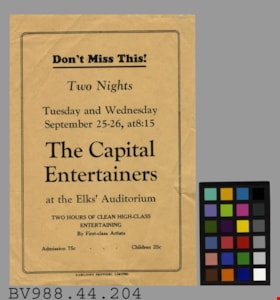
![Harding and Yasue Yasui, [1926] (date of original), copied 2004 thumbnail](/media/hpo/_Data/_BVM_Images/2019/2019_0032_0038_001.jpg?width=280)
![Harding and Yasue Yasui in the family car, [1926] (date of original), copied 2004 thumbnail](/media/hpo/_Data/_BVM_Images/2019/2019_0032_0035_001.jpg?width=280)
![Harding and Yasue Yasui in the family car, [1926] (date of original), copied 2004 thumbnail](/media/hpo/_Data/_BVM_Images/2019/2019_0032_0036_001.jpg?width=280)
![Hideko Shimotakahara, [1922] (date of original), copied 1986 thumbnail](/media/hpo/_Data/_Archives_Images/_Unrestricted/204/204-013.jpg?width=280)
![Hotel Burnaby, [1953] thumbnail](/media/hpo/_Data/_Archives_Images/_Unrestricted/371/410-001.jpg?width=280)
![Hotel Burnaby Ltd., [1955] thumbnail](/media/hpo/_Data/_Archives_Images/_Unrestricted/371/474-001.jpg?width=280)

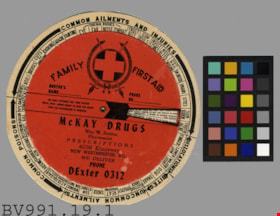
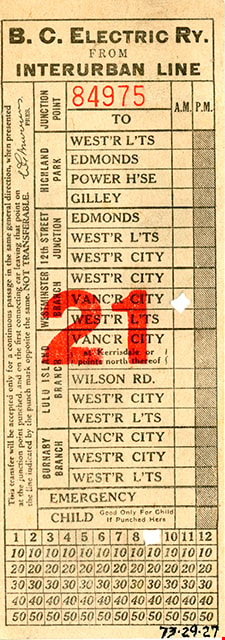
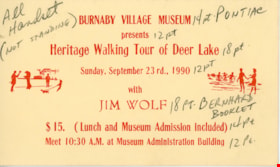
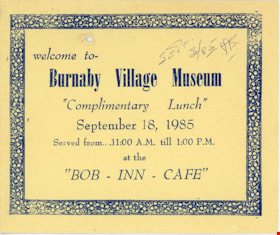
![Japanese Bath House, [1956] (date of original), copied 1978 thumbnail](/media/hpo/_Data/_BVM_Images/1977/197800110002.jpg?width=280)
![The Kokuryos, Sukegoro Yasui and Louise Irwin, [1980-] (date of original), copied 2004 thumbnail](/media/hpo/_Data/_BVM_Images/2019/2019_0032_0075_001.jpg?width=280)
